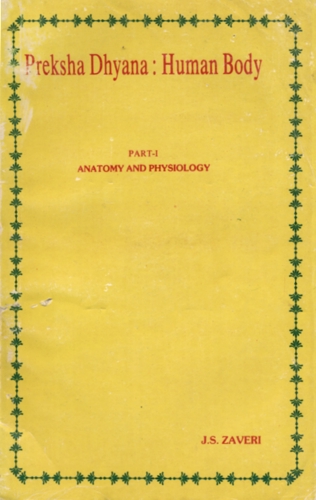The study of the human body is fundamental to health sciences. Anatomy and physiology are inextricably interrelated and both are essential to students of life-sciences.
The body is characterised by bilateral symmetry. Many body parts and organs occur in pairs. Single organs are usually centrally located along the long axis which divides the body into two halves. The internal framework (skeleton) is a masterpiece of architectural and mechanical design which is composed of more than 200 bones. A prominent structural characteristic is the flexible spine or vertebral column. The internal temperature is maintained at 98.6° F or 37° C.
Regions of the body
The body is divided into:
| Axial portion | } | head and neck |
| trunk—thorax (chest), abdomen and pelvis | ||
| Appendicular portion | } | upper extremity-upper arm, forearm and hand |
| lower extremity—thigh, leg and foot |
Organization of the Body
The keynote of the human body is organization. Body is made up of trillions of specialized cells which are supported and nourished by other cells. Cells are grouped into organs and systems and the integrated sum of these systems is the body as a whole.
The cell is the smallest basic structural unit of the body carrying on all the vital functions. Tissues are composed of groups of cells of similar structure with matrix between them. The cells of a particular tissue are specialized for the performance of specific functions. Tissues performing a common function or functions are grouped into organs. A system is a group of organs that work together as a team to perform a series of functions. The important systems of the body are as follows:
- The Skeletal System provides the basic framework that supports the body. It consists of bones, cartilage and the connective tissue which bind them together. It protects the vital but vulnerable organs of the body.
- The Muscular System consists of skeletal and smooth muscles. It works with the bones to provide support and produce movements of body parts.
- The Integumentary System—the skin—is both a mechanical and a chemical barrier between the body and the environment. It protects the body from microbes, from injury to inner tissues, from damage by ultraviolet radiation of the sun. It also protects the body from dehydration. It retains heat in cold season and dissipates excess heat in hot season and helps temperature regulation.
- The Digestive System is concerned with the intake, breakdown and absorption of food materials and the elimination of solid wastes.
- The Circulatory System distributes nutrients and oxygen to the cells and carries away their waste products.
- The Respiratory System provides the means for bringing oxygen into the body and eliminating carbon-dioxide.
- The Excretory System works to eliminate the waste products of cell activity.
- The Nervous System receives and evaluates information about the outside world and controls and co-ordinates the body's activities.
- The Endocrine System produces chemical substances (hormones) that affect other cells and organs and help to control and co-ordinate their activities.
- The Reproductive System functions for the continuation of the species.
In the chapters that follow, the structure and functions of the major organs and systems of the body will be discussed in greater detail.
Cavities of the Body
For descriptive purposes the body is divided into cavities and the main organs are contained in these cavities. There are four main cavities:
- The Cranial Cavity contains the brain and its boundaries are formed by the bones of the skull.
- The Thoracic Cavity is situated in the upper part of the trunk and its boundaries are formed by the sternum, 12 pairs of ribs, the thoracic vertebrae and the diaphragm. It contains: the lungs, the heart, the trachea, the bronchi, the aesophagus and the aorta.
- The Abdominal Cavity is the largest cavity in the body. It is situated in the middle of the trunk and its boundaries are: the diaphragm, the abdominal walls, the lumbar vertebrae and the pelvic cavity (with which it is continuous). It contains the organs and glands involved in the digestion and absorption of food, the kidneys and the adrenal glands.
- The Pelvic Cavity extends from the lower end of the abdominal cavity and its boundaries are formed by the pubic bones, the sacrum and coccyx and the muscles of the pelvic floor. It contains parts of intestines, the bladder, the rectum, parts of ureters, the urethra; the uterus, ovaries (in the female); some of the organs of reproductive system (in the male).
 Jethalal S. Zaveri
Jethalal S. Zaveri

